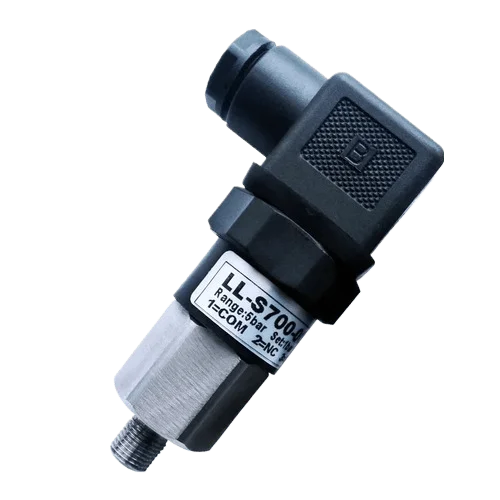Mechanical PS
Mechanical pressure switches track the pressure levels of gases, air, or liquids and activate or deactivate the switch once the set threshold is met.
Description
A mechanical pressure switch is a dependable device designed to monitor and regulate pressure in both industrial and commercial applications. In particular, it functions using mechanical elements, which makes it especially well-suited for conditions where electronic alternatives may be less effective or practical.
How Does a Mechanical Pressure Switch Work?
A mechanical pressure switch uses components like a diaphragm, piston, or bellows to sense pressure variations. Once the pressure reaches a preset limit, the internal mechanism then triggers electrical contacts. As a result, this enables accurate control and monitoring of equipment such as pumps, compressors, and safety systems, thereby helping to maintain both efficiency and operational safety.
Key Features and Benefits
- Exceptional Durability: Designed with robust components, these switches perform reliably even in harsh and challenging environments.
- Versatile Pressure Range: Suitable for both low and high-pressure applications, offering flexibility for various use cases.
- Cost-Effective Solution: Their straightforward design makes them an economical choice for managing and monitoring pressure.
- Customizable Settings: Adjustable pressure setpoints allow for fine-tuned activation and deactivation based on specific system requirements.
Applications :-
- HVAC Systems: Ensure proper air and fluid pressure control in heating, ventilation, and cooling systems for optimal performance.
- Industrial Automation: Play a crucial role in maintaining the safe and efficient operation of hydraulic and pneumatic systems.
- Safety Systems: Act as a fail-safe, triggering alarms or system shutdowns in cases of overpressure to protect equipment and personnel.
- Process Industries: Widely used in sectors such as oil and gas, chemical processing, and water treatment for reliable pressure management.
Why Choose Mechanical Pressure Switch for Your Applications?
Pressure switches offer an ideal solution when durability, straightforward operation, and dependable performance are required. Thanks to their mechanical design, these devices deliver stable performance even in harsh environments where electronic systems might fail. Widely used across multiple industries, these switches deliver a reliable and efficient way to manage pressure, making them a key component in systems around the world.





